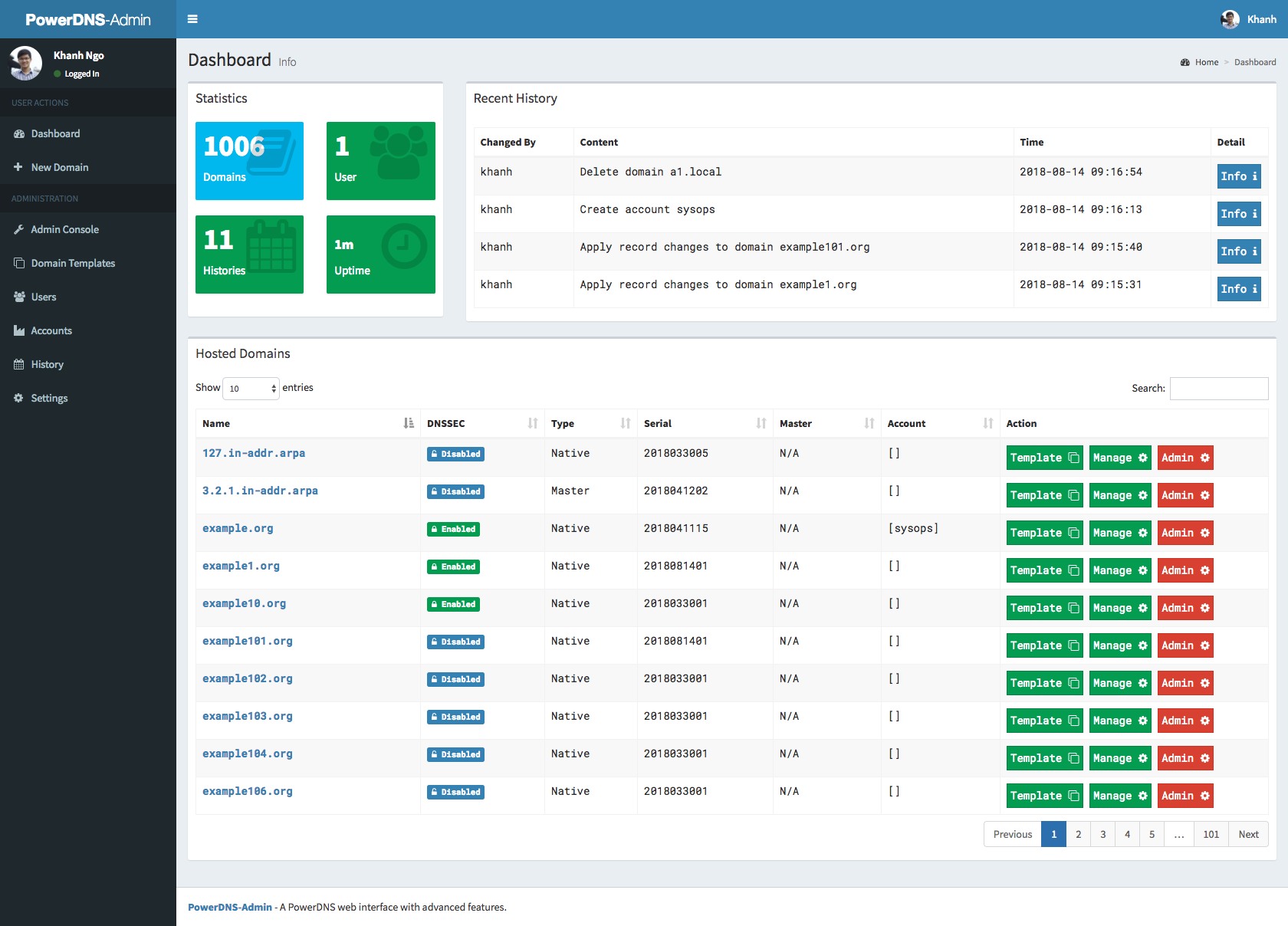mirror of
https://github.com/cwinfo/powerdns-admin.git
synced 2025-09-14 22:42:31 +00:00
43 lines
1.8 KiB
Markdown
43 lines
1.8 KiB
Markdown
# PowerDNS-Admin
|
|
A PowerDNS web interface with advanced features.
|
|
|
|
[](https://travis-ci.org/ngoduykhanh/PowerDNS-Admin)
|
|
[](https://lgtm.com/projects/g/ngoduykhanh/PowerDNS-Admin/context:python)
|
|
[](https://lgtm.com/projects/g/ngoduykhanh/PowerDNS-Admin/context:javascript)
|
|
|
|
#### Features:
|
|
- Multiple domain management
|
|
- Domain template
|
|
- User management
|
|
- User access management based on domain
|
|
- User activity logging
|
|
- Support Local DB / SAML / LDAP / Active Directory user authentication
|
|
- Support Google / Github / Azure / OpenID OAuth
|
|
- Support Two-factor authentication (TOTP)
|
|
- Dashboard and pdns service statistics
|
|
- DynDNS 2 protocol support
|
|
- Edit IPv6 PTRs using IPv6 addresses directly (no more editing of literal addresses!)
|
|
- limited API for manipulating zones and records
|
|
|
|
### Running PowerDNS-Admin
|
|
There are several ways to run PowerDNS-Admin. Following is a simple way to start PowerDNS-Admin using Docker
|
|
|
|
Step 1: Build docker image
|
|
|
|
```$ docker-compose build```
|
|
|
|
Step 2: Change the configuration
|
|
|
|
Edit the `docker-compose.yml` file to update the database connection string in `SQLALCHEMY_DATABASE_URI`.
|
|
|
|
Step 3: Start docker container
|
|
|
|
```$ docker-compose up```
|
|
|
|
You can now access PowerDNS-Admin at url http://localhost:9191
|
|
|
|
**NOTE:** For other methods to run PowerDNS-Admin, please take look at WIKI pages.
|
|
|
|
### Screenshots
|
|

|